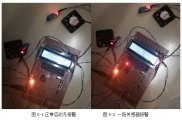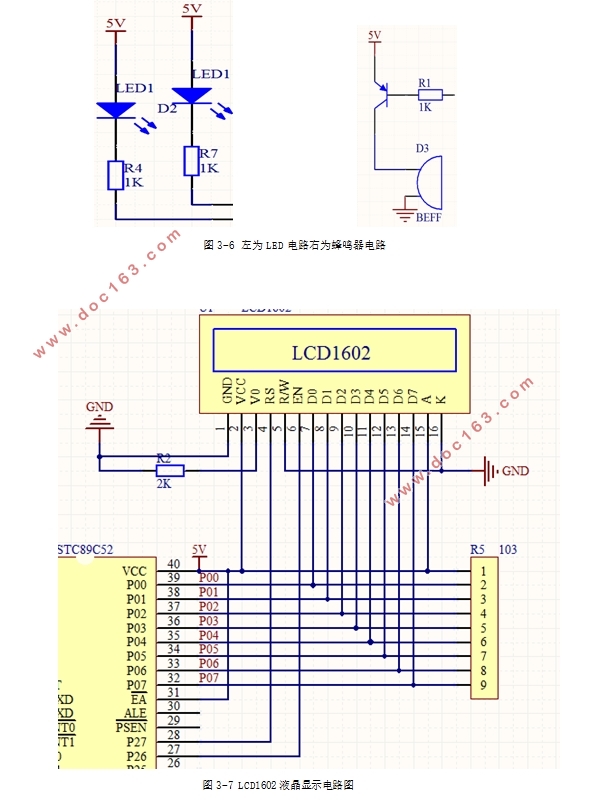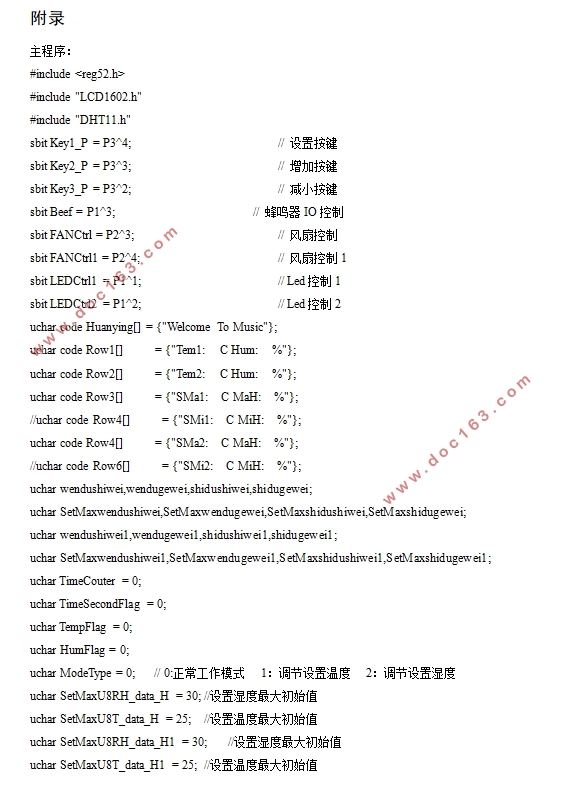基于单片机的仓库环境控制系统的设计(附主程序清单)

基于单片机的仓库环境控制系统的设计(附主程序清单)(论文10000字,主程序清单)
摘要:在现代化大机器的农业、工业生产中,仓库贮存系统显得尤为重要。一个高度智能化、人性化的仓库环境调控系统是当今仓储行业迫切需要的。本文设计了一个能够精确地、实时地测量显示并且调控的智能仓库环境控制系统。以性价比极高。功能强大的STC89C52单片机作为主脑,辅以液晶双行显示、自动超值报警、自动调控系统。最大化的贴近了日常生活环境,具有很高的实用价值。作为本次设计中采用的温湿度度传感器DHT11,它小于+-2摄氏度的误差足以实现对于药材仓库、粮食仓库等仓库空间的温度示警的需求。一旦温湿度值超过预先由操作人员设定的数值,报警系统能在最短时间启动并且外部设置的风扇能开始降温除湿。
关键词:智能检测,单片机,DHT11,温湿度监测
Warehouse Environment Control System Based on MCU
Abstract:In modern agricultural machinery, industrial production, warehouse storage system is very important. A highly intelligent warehouse, environment control system of humanism is the storage industry is in urgent need. This paper designs a precise, real-time measurement and display of intelligent warehouse environment control system and control the cost. High. The powerful STC89C52 micro-controller as the mastermind, with double liquid crystal display, automatic alarm value, automatic control system. The maximum close to the daily life environment, has very high practical value. As the set temperature humidity sensor used in DHT11, it is less than +-2 degrees Celsius to achieve for medicinal materials warehouse, food warehouse space temperature warning requirements. Once the temperature and humidity values exceed the numerical advance by operation personnel setting, the alarm system can be in the shortest time to start and a fan arranged outside can start cooling dehumidification. [来源:http://www.doc163.com]
Key words: Smart supervisor,Single chip, DHT11, Temperature and humidity measuring
[资料来源:www.doc163.com]



目 录
1.绪论 1
1.1选题背景与意义 1
1.2国内外研究现状 1
1.3论文的主要内容和架构 3
2. 系统的组成及其硬件 3
2.1温湿度模块的选择及其参数 3 [资料来源:Doc163.com]
2.1.1引脚说明 4
2.1.2 DHT11的测量时序 5
2.2显示模块的选择及其参数 7
2.3中央控制模块 8
2.3.1单片机概述 8
2.3.2 STC89C52介绍 8
2.3.3 STC89C52技术指标 10
2.3.4报警模块设计 13
2.4控制命令发送模块设计 13
3.系统硬件电路设计 14
3.1系统电源电路设计 14
3.2单片机信号处理模块电路设计 15
3.2.1单片机复位电路 16
3.2.2单片机晶振电路 17
3.3温湿度采集模块电路设计 17
3.4警报发送模块电路设计 17
3.5LCD1602显示模块电路设计 18
4.系统软件设计与实现 19
4.1选择编程语言 19
4.2主程序的实现 19
5.系统调试 20
6.结论 21 [版权所有:http://DOC163.com]
6.1论文总结 21
6.2系统展望 21
参考文献 22
致谢 23
[资料来源:Doc163.com]
